Electric charges and fields
1/35
There's no tags or description
Looks like no tags are added yet.
Name | Mastery | Learn | Test | Matching | Spaced |
|---|
No study sessions yet.
36 Terms
What is a charge?
It is the property of a substance that allows it to feel electric and magnetic fields
What is its SI and CGS unit?
SI → Coloumb
CGS → esu (electro static unit) = Franklin where 1 esu = 1 franklin
emu → 1 coulumb = 1/10 emu
What is the smallest unit of charge?
Frankline
What is the largest unit of charge?
Faraday
How much is 1 coulomb equal to in
Frankline
esu
Stat coloumb
emu
faraday
3×109
3×109
3×109
10-1
965×10-2
What is the numerical value for charge on an electron?
1.6×10-19C
What is the mass of an electron?
9.1×10-31 Kg
What is the formula for the charge that is being conducted on a sphere with radius R??
Q=4*π*εo*R*V
Where:
Q = charge
R = radius of the sphere
V = electric potential
εo = permittivity of free space
What is the relation that you get between mass and speed from the theory of relativity?
Mass ∝ speed
What is the charge and mass of an alpha particle? WHat is it made up of?
mass = 4* mass of proton
charge = 2* charge of electron;
It is made up of 2 Protons and 2 Neutrons
What is the charge and mass of a proton?
Charge = +1.602 × 10⁻¹⁹ C
(That’s positive — same magnitude as electron, but opposite sign)Mass = 1.6726 × 10⁻²⁷ kg
What is the charge and mass of a deuteron? What is it made up of?
mass = 2*mass of proton
charge = same as electron;
It is made up of 1 proton and 1 neutron
What happens when a charge travels with constant velocity?
It becomes current and it has a magnetic and an electric field around it
What happens when a charge travels with acceleration?
It becomes current and it has magnetic, electric fields and emits electromagnetic (e.m.) waves around it
What is the value of ‘k’ in Coulomb’s law?

What is ε0 called? What is its value??
Permittivity of free space; It is the property of the medium which would tell us the strength with which the medium would oppose the electrostatic force; 8.854×10⁻¹² C²/N
What change happens in the formula in Coulomb’s law to accommodate the change in one of its rules? What is that change?
The change that happened is:- Coulomb’s law is only applicable for vacuum/air, the change that happened is that it was now in a medium.

What is the formula for x in equilibrium in the repelling case?
x = d/(√n)+1
where,
x = Distance of the particle that is causing the system to attain equilibrium from the smaller charged particle
n = |q2|/|q1|
d → Distance of the particle from the larger charge
What is the formula for x in equilibrium in the attracting case?
x = d/(√n)-1
where,
x = Distance of the particle that is causing the system to attain equilibrium from the smaller charged particle
n = |q2|/|q1|
d → Distance of the particle from the larger charge
What is the formula for electric field strength/ electric field intensity
E = F/qo
Where,
E → Electric field strength / electric field intensity
F → Electrostatic force
qo → Charge that is present that has this electric field around it
What is the formula for finding out the angle of deviation?
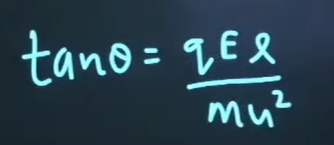
What is the formula for finding out the electric field of a charge that is on the axis of a circle?
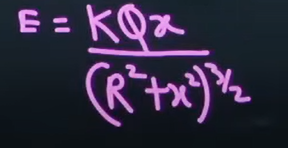
For a uniformly charged ring, what axial distance xxx from the centre gives the maximum electric field intensity?
Maximum value for x here is x = R/√2
What is the formula for finding out the net Electric field intensity due to a line charge??
We would need to first take out the components, which are given in the image
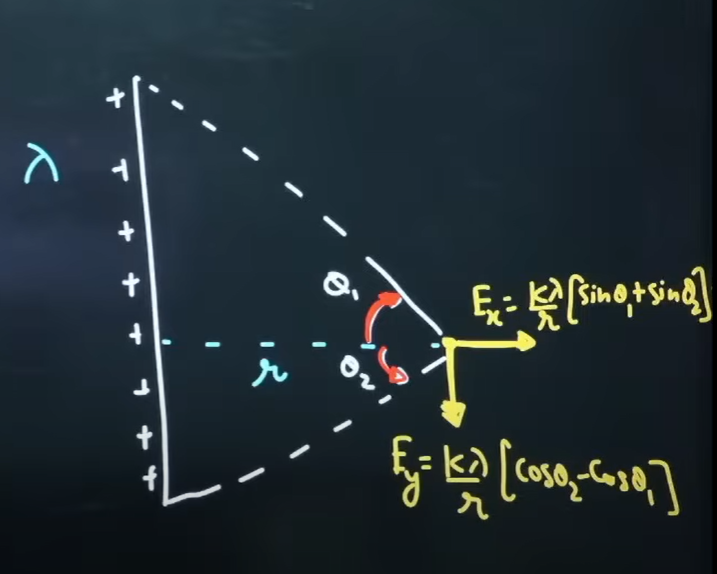
What is the formula for finding out the net Electric field intensity in an arc??
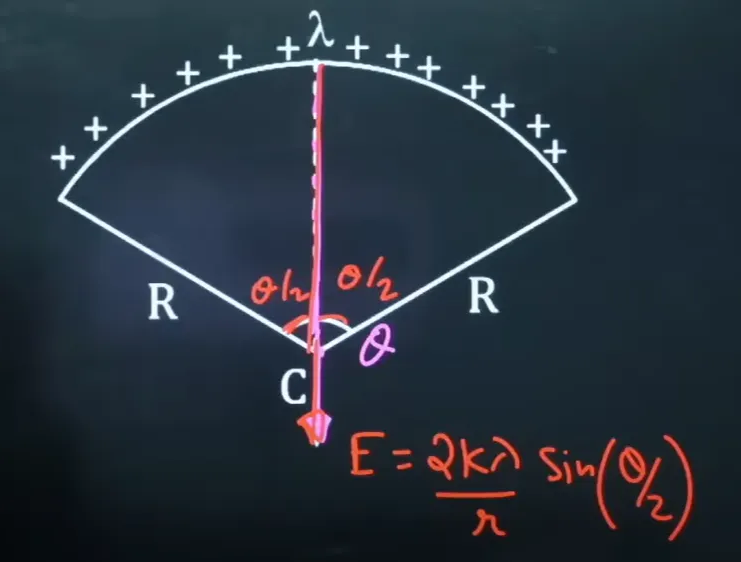
What is the formula for electric dipole?
P = q*l
Where,
P → Electric dipole
q → Charge
l → length between the charge that is experiencing the dipole and one of the other charges
What is a positron?
It has the mass of an electron, the charge too, but has a +ve charge on it as compared to the electron’s -ve charge
What is the formula that we use when 2 charged objects of different radii share charge between themselves?
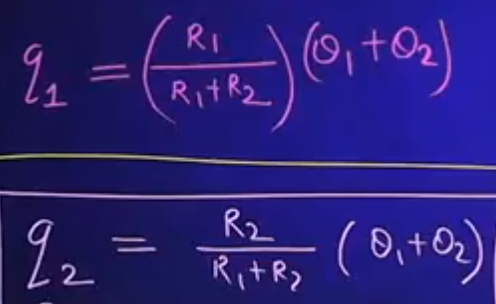
What is the charge on a up quark?
+2/3 electron
What is the charge on a down quark?
-1/3 electron
What is ionization energy?
It is the amount of energy required to break the valence electron in an insulator
What is the formula given by Gauss’s law?
q(enclosed)/ε0
q → Chargeb
ε0 → Realitivity of permitivity
What is the formulae that gives us the relation between electric field and dipole moment?

What is teh formula for Time period of SHM in an electric dipole?

What is the formula for work done on rotating a dipole?

What is the formula for potential energy present in a dipole?
